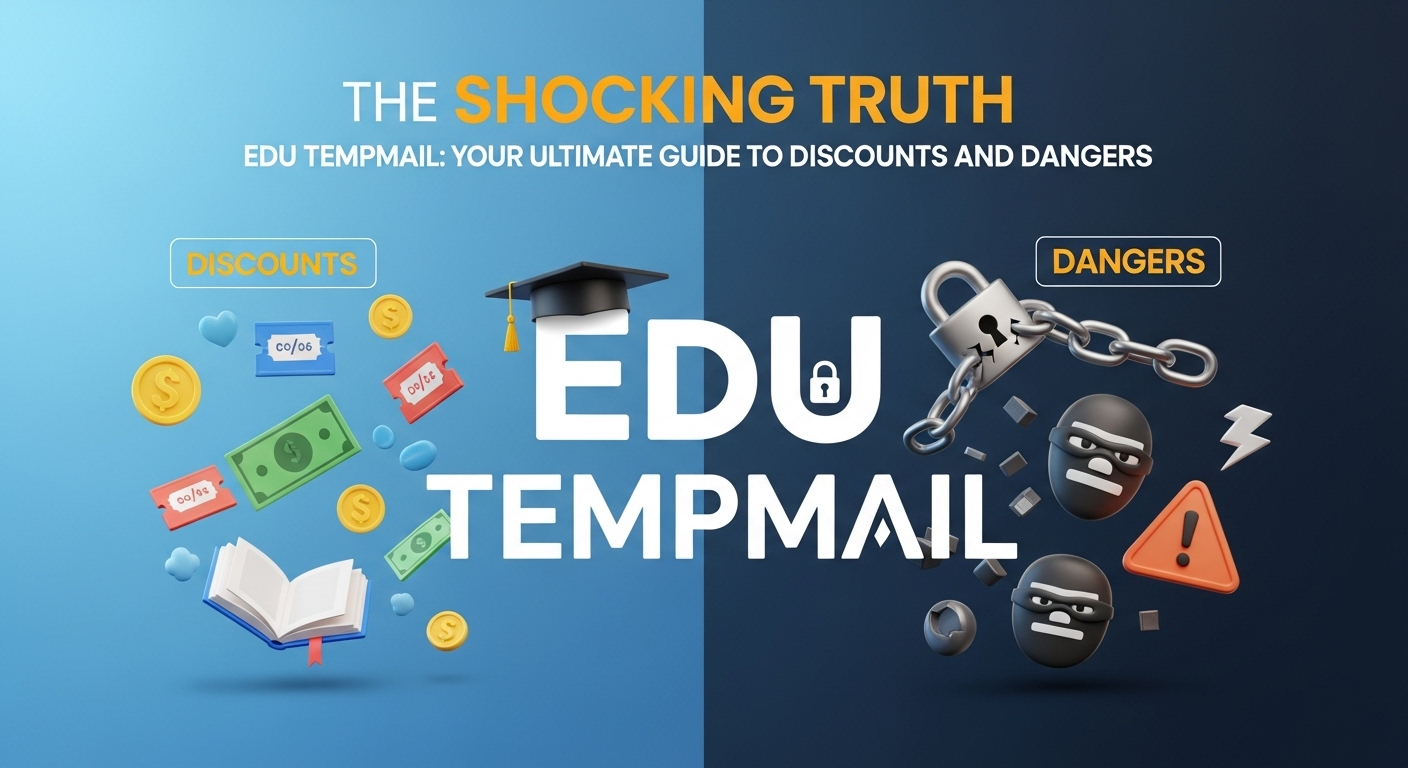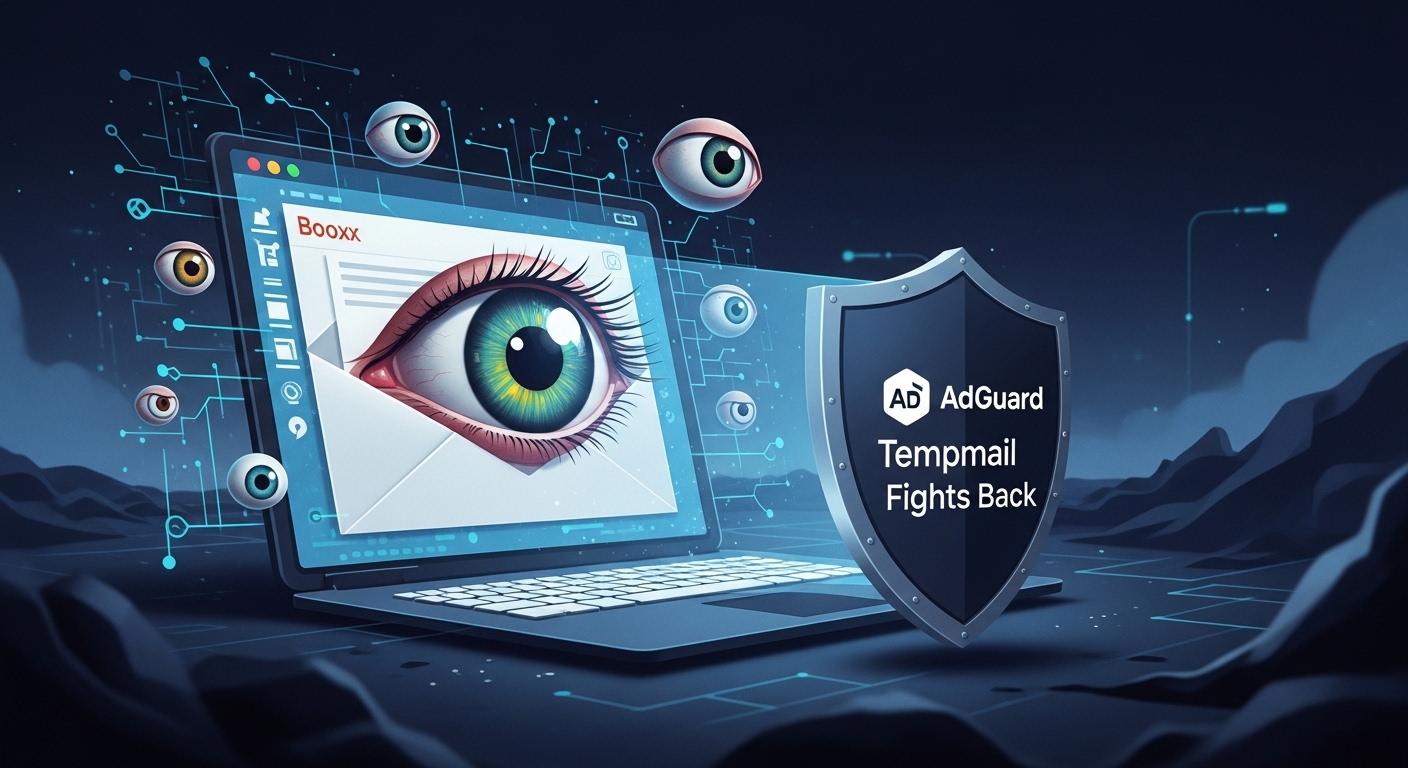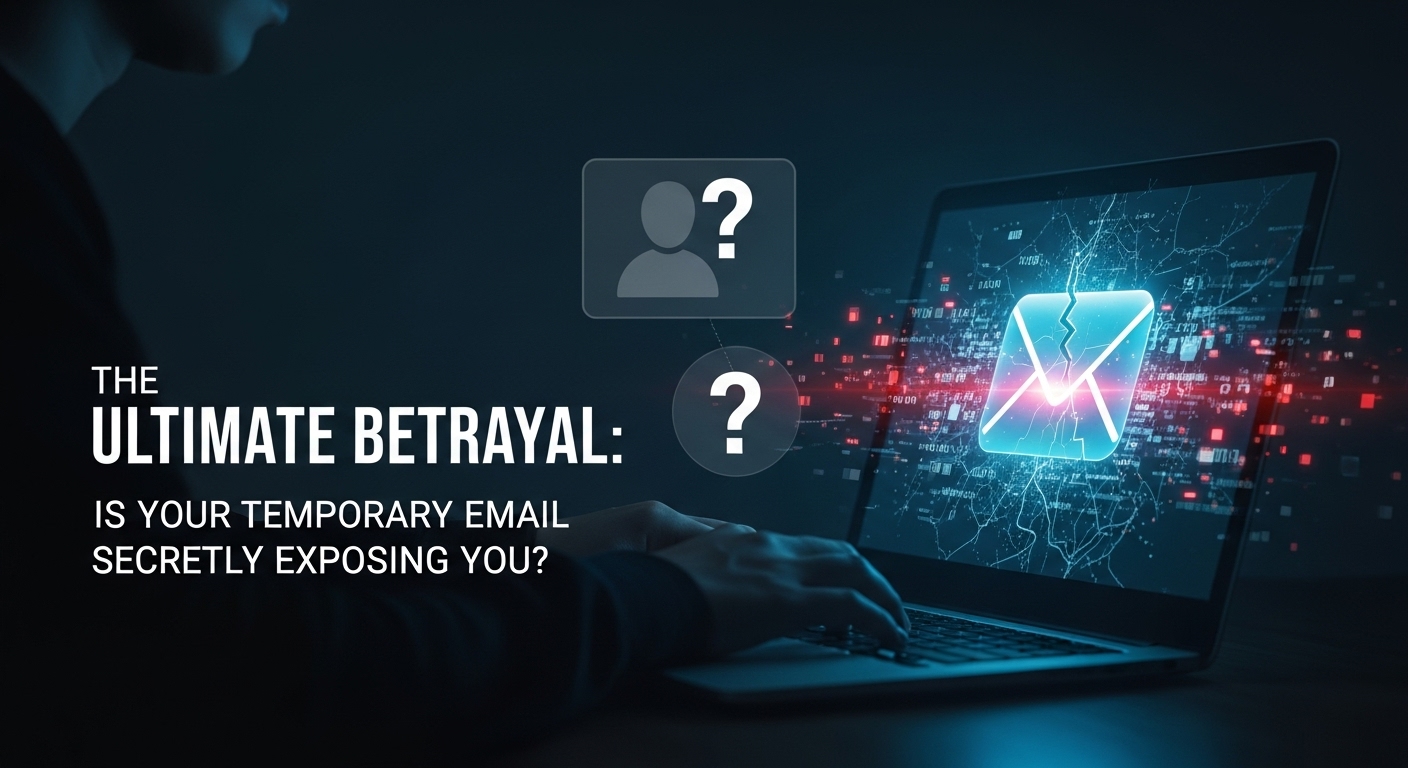The Shocking Truth About Edu Tempmail: Your Ultimate Guide to Discounts and Dangers

Imagine getting over 60% off Adobe Creative Cloud and half-price Amazon Prime. What if you could get those deals without being a student? That's the tempting promise of an edu tempmail, but the reality is far more dangerous than you think. In a world where college costs are soaring, the allure of a student discount is stronger than ever. It feels like a secret key to unlocking a world of savings, and services promising a temporary .edu email seem to offer that key for free.
This guide will pull back the curtain on the world of edu tempmail. We'll explore the incredible value of a legitimate student email, a perk that can save you thousands of dollars. But more importantly, we will expose the dark side of using fake or temporary services to chase those deals. An edu tempmail is a concept that merges the convenience of a disposable email with the power of a university-issued domain, specifically to gain access to student-only benefits. While it sounds like a clever life hack, it's a double-edged sword. One side promises savings; the other hides severe security vulnerabilities, permanent account loss, and serious legal risks.
Why a Real.Edu Email is Worth a Fortune
A legitimate .edu email address, provided by an accredited college or university, is one of the most valuable assets a student possesses. It's more than just a way to communicate with professors; it's a golden ticket to a world of exclusive discounts and free services that can save students hundreds, if not thousands, of dollars each year. Companies offer these perks to build brand loyalty with the next generation of professionals, hoping to convert them into full-paying customers after graduation.
The sheer scale of these savings is staggering and provides the powerful motivation behind the search for a shortcut like an edu tempmail. Let's break down some of the most significant benefits:
- Software & Productivity: This is where some of the biggest savings are found. Students can get Adobe Creative Cloud, which includes Photoshop, Premiere Pro, and Illustrator, for over 60% off—often around $24.99 per month instead of the standard $69.99 per month, saving over $500 annually. Microsoft 365 Education is often available for free, providing access to Word, Excel, PowerPoint, and 1TB of OneDrive storage. For aspiring developers, the GitHub Student Developer Pack is a treasure chest, offering free access to professional tools, cloud hosting credits from services like Microsoft Azure, and free domain names that are collectively worth thousands of dollars.
- Shopping & Lifestyle: The most well-known perk is Amazon Prime Student. Students get a six-month free trial and then a 50% discount on a full Prime membership, which includes free two-day shipping, Prime Video, and Amazon Music. This alone saves about $84 per year compared to a standard membership.
- Streaming & Entertainment: The deals on entertainment are almost too good to be true. The most popular is the Spotify Premium student bundle, which includes not only ad-free music but also access to Hulu (with ads) for a single low price of $5.99 per month. This bundle easily saves a student over $120 per year compared to subscribing to each service separately.
- News & Media: Staying informed is cheaper for students. Major publications like The New York Times and The Washington Post offer deeply discounted digital subscriptions, often for just a few dollars a month, making high-quality journalism accessible on a student budget.
- Hardware & Tech: When it's time to buy a new laptop or tablet, a .edu email unlocks education pricing from major brands. Apple, Samsung, Dell, and Best Buy all have student discount programs that can save hundreds of dollars on essential tech.
To put this in perspective, here’s a quick look at the potential annual savings.
| Category | Brand/Service | Typical Discount/Offer | Estimated Annual Savings |
| Software & Productivity | Adobe Creative Cloud | Over 60% off (e.g., ~$25/mo vs. ~$70/mo) | ~$540 |
| Microsoft 365 Education | Free Access to Web Apps & Storage | $70 | |
| GitHub Student Pack | Free access to pro tools, domains, cloud credits | $1,000+ | |
| Shopping & Lifestyle | Amazon Prime | 6-month free trial, then 50% off | $84 |
| Streaming & Entertainment | Spotify Premium with Hulu | Bundle for $5.99/mo | $120+ |
| News Subscriptions | The New York Times | Basic Access for $1/week | ~$208 |
| Hardware | Apple Education Store | Up to 10% off MacBooks, iPads | $100 - $200+ |
Given that the average student faces significant financial pressure, with many relying on thousands of dollars in financial aid, the temptation to access these savings is completely understandable. This powerful incentive has created a shady online market for services that promise a shortcut to these benefits.
Weighing the Options: A Clear Pros vs. Cons Breakdown
When you lay it all out, the choice becomes starkly clear. The perceived benefits of using an edu tempmail are fleeting and increasingly unlikely to work, while the risks are severe, permanent, and far-reaching.
| Pros (The Allure) | Cons (The Reality) |
| Potential Access to Discounts: The possibility of saving money on popular software, subscriptions, and products. | Extreme Security Risks: Inboxes are often public, unencrypted, and vulnerable to hijacking. |
| Spam Avoidance: Keeps promotional offers from flooding a primary inbox. | Permanent Account Loss: No way to recover passwords, receive 2FA codes, or get support. |
| Perceived Anonymity: Sign up for trials without revealing your primary email address. | Clear Terms of Service Violation: Breaks the rules of companies like Amazon and Adobe, leading to account termination. |
| Instant Gratification: Services promise a quick and easy way to get a .edu address. | Potential Legal Consequences: The act can be considered fraud, with risks of fines or legal action. |
| Not Truly Anonymous: Services log your IP address and other metadata, destroying true privacy. | |
| Increasingly Ineffective: Most major retailers now use verification systems that a fake email cannot bypass. |
The Smart Path Forward - Protecting Yourself in the Digital Age
The desire to save money and protect your privacy is valid. The problem isn't the goal; it's the dangerous method of using an edu tempmail. The truly smart path forward involves arming yourself with knowledge and using legitimate tools to protect your digital life. This approach not only keeps you safe but is also far more effective in the long run.
Your Digital Armor: Cybersecurity Best Practices for Everyone
Whether you're a student, a professional, or just a casual internet user, building a strong digital defense is non-negotiable. These best practices, recommended by cybersecurity experts and government agencies, are your first line of defense against the vast majority of online threats.
- Master Your Passwords: The era of using your pet's name for every password is over. A strong password is long (at least 12-16 characters), complex (a mix of upper and lowercase letters, numbers, and symbols), and unique for every single account. Remembering dozens of such passwords is impossible for a human, which is why using a password manager is essential. These tools generate and store highly secure passwords for you, so you only have to remember one master password.
- Enable Multi-Factor Authentication (MFA): This is arguably the single most effective step you can take to secure your accounts. MFA, also known as two-factor authentication (2FA), adds a second layer of security beyond your password. Even if a hacker steals your password, they won't be able to log in without the second factor, which is usually a code sent to your phone or generated by an authenticator app. Think of it as a deadbolt on your digital door. Turn it on for every account that offers it, especially your email, banking, and social media.
- Spot the Phish: Phishing remains one of the most common ways criminals steal information. These scams, which arrive via email, text message (smishing), or social media DMs, try to trick you into clicking a malicious link or revealing sensitive information. Learn to spot the red flags:
- Check the sender's address: Hover over the sender's name to see the full email address. Scammers often use addresses that look similar to legitimate ones but are slightly off (e.g., support@microsott.com).
- Look for a sense of urgency: Phishing messages often create panic, claiming your account is locked or has been compromised and that you must "act now".
- Beware of generic greetings and poor grammar: Legitimate companies will usually address you by name, not "Dear Customer." Obvious spelling and grammar mistakes are also a major red flag.
- Never click suspicious links: If you're unsure, type the website's address directly into your browser instead of clicking a link in an email.
- Use Public Wi-Fi Safely: Free Wi-Fi at a coffee shop or airport is convenient, but it's also an insecure network where hackers can potentially intercept your data. Avoid logging into sensitive accounts like your bank or email on public Wi-Fi. For better protection, use a Virtual Private Network (VPN), which encrypts your internet traffic and hides your activity from prying eyes.
- Keep Your Software Updated: Those constant reminders to update your phone, computer, and apps can be annoying, but they are crucial for your security. These updates often contain patches for newly discovered security vulnerabilities. By delaying updates, you're leaving your devices exposed to known threats.
- Share with Care: Be mindful of what you post on social media. Information like your full name, birthday, hometown, or pet's name is often used in password security questions. Oversharing can give scammers all the information they need to impersonate you or guess your passwords. For more detailed guidance, consider exploring the resources provided by official bodies like the (https://www.cisa.gov/cybersecurity-training-exercises) and the (https://consumer.ftc.gov/identity-theft-and-online-security/online-privacy-and-security), which offer a wealth of information for the general public.
Legitimate Privacy Tools: Safe Alternatives to "Edu Tempmail"
If your main goal is to protect your primary inbox from spam when signing up for non-essential services, you don't need to resort to a risky edu tempmail. There are safe, legitimate tools designed specifically for this purpose.
For Legitimate, One-Time Uses:
There are several reputable temporary email services that are perfect for situations where you need a disposable address for a short period, such as downloading an ebook or accessing a forum. These services are transparent about what they do and do not pretend to offer .edu domains for fraudulent purposes.
- Guerrilla Mail: A long-standing service that keeps emails for one hour and even allows you to send messages from the temporary address.
- (https://temptomail.org/): A very popular and easy-to-use option that generates an address instantly.
- 10 Minute Mail: As the name suggests, this service is ideal for very quick verification tasks where the email address is only needed for a few minutes.
For More Secure, Long-Term Privacy: If you want the privacy benefits of a disposable address but with the security and control of a real account, email aliases are a far superior solution.
- Email Aliases: Services like Apple's "Hide My Email" and privacy-focused email providers such as Proton Mail allow you to create multiple unique, random email addresses (aliases) that all forward to your single, secure primary inbox. You can give a different alias to every service you sign up for. If one of those aliases starts receiving spam, you know exactly which company leaked or sold your data, and you can simply delete that alias without affecting any of your other accounts. This gives you the best of both worlds: robust privacy and full control.
For a deeper dive into protecting your digital footprint, resources like Privacy Guides and the Electronic Privacy Information Center (EPIC) offer expert-vetted recommendations on everything from secure browsers to private communication tools.
Conclusion: The Smart Choice is a Secure Choice
The promise of an edu tempmail taps into a powerful desire: to access valuable resources and save money in an increasingly expensive world. The discounts available to students are genuinely incredible, and it's easy to see why someone would look for a shortcut to get them.
However, as we've seen, this particular shortcut leads off a cliff. The path of using a fake or temporary .edu email is littered with unacceptable risks that far outweigh any potential reward. You expose yourself to critical security vulnerabilities, risk the permanent loss of your accounts, and venture into a legal and ethical gray area that can have serious real-world consequences. Furthermore, with modern verification systems in place, these services are becoming less effective every day.
True digital savvy isn't about finding risky loopholes. It's about understanding the landscape and using the right tools for the right job. It's about building a strong foundation of cybersecurity habits to protect your valuable data and using legitimate privacy tools to control who has access to your information. The thousands of dollars you could save with student discounts are worthless if it costs you your digital identity. Invest in your security first—that's a return that will last a lifetime.
Your Questions Answered
Frequently Asked Questions (FAQ) about Edu Tempmail
- Is it illegal to use an edu tempmail?
While using a standard temporary email service for privacy is not illegal, using it to create a fake .edu address to misrepresent yourself as a student for financial gain can be considered fraud. This is illegal and can lead to severe consequences, including fines and legal action under laws like the Computer Fraud and Abuse Act.
- Can I get Amazon Prime Student with a temporary email?
No. Amazon's Prime for Young Adults program requires verification that goes beyond a simple .edu email address. You will likely need to provide proof of enrollment, such as a current student ID, transcript, or tuition bill, making a temporary email ineffective.
- How does Adobe verify student status?
Adobe uses a school-issued email address for instant verification. However, if that email cannot be verified or if you don't have one, they will request additional proof of eligibility, such as a school ID card, report card, or a dated tuition statement.
- What are the safest temporary email providers?
For legitimate, non-sensitive uses (like avoiding spam from a one-time download), services like Guerrilla Mail and Temp-Mail.org are popular. For any situation requiring better security and long-term control, using email aliases from a trusted, encrypted provider like Proton Mail is a much safer alternative.
- What happens to my data on a temporary email site?
Your data, including the content of any emails you receive, is often stored unencrypted on the provider's servers. The provider can likely read your emails, and many of them log your IP address and browser information. The data is typically deleted permanently after a short period.
- Can I recover an account made with a temporary email?
Almost never. This is one of the biggest risks. Once the temporary email address expires, you lose all access to it. This makes it impossible to receive password reset links, verification codes, or any other crucial communication needed for account recovery.
- Are.edu emails free?
Legitimate .edu email addresses are provided for free by accredited educational institutions to their currently enrolled students, faculty, and staff. They are not available for free to the general public, and any service claiming to offer one instantly is highly suspicious.
- What's the difference between a temporary email and an email alias?
A temporary email is a completely separate, short-lived inbox hosted by a third-party service that you don't control. An email alias is a forwarding address that you create and control, which directs mail to your primary, secure inbox. Aliases offer far better security, privacy, and long-term usability.
- Why do companies offer student discounts?
Companies offer these generous discounts as a marketing strategy. They aim to build brand loyalty with young consumers early on, hoping to retain them as full-paying, long-term customers after they graduate and enter the workforce with higher disposable incomes.
- What is the best way to protect my online privacy as a student?
The best approach is multi-layered. Use strong, unique passwords for every account (managed with a password manager), enable multi-factor authentication (MFA) everywhere, be vigilant against phishing scams, use a VPN on public Wi-Fi, and keep all your software and apps updated.
- What is academic integrity and how does this relate?
Academic integrity is a fundamental commitment to core values like honesty, trust, fairness, respect, and responsibility. Using a fake identity to fraudulently obtain student benefits is a form of digital dishonesty that directly violates these principles.
You Might Also Like
Is Your Inbox Spying on You? Here’s How AdGuard Tempmail Fights Back
Have you ever paused before entering your email address into a new website, feeling a slight hesitation? That feeling is...

Why Your Hotmail Is a Privacy Nightmare (And How Temp Mail Can Save You)
Did you know that nearly half of all emails sent worldwide are spam? In 2024, spam accounted for a staggering 47.27% of ...

The Ultimate Deception: Is Tempmail Safe, or a Ticking Time Bomb?
Your email inbox is more than just a place for messages. It's the digital key to your entire online life. Every password...

The Ultimate Betrayal: How Your Inbox Is Selling You Out (And How to Use Tempmail to Stop It)
Your inbox is a battlefield. Every single day, a war is waged for your attention, your data, and your money. Don't belie...

Your Digital Shield: The Astonishing Truth About How Temp Mail Works
Opening your email inbox can feel like walking into a battlefield. You’re constantly dodging a barrage of promotional ju...

The Ultimate Betrayal: Is Your Temporary Email Secretly Exposing You?
Ever feel like your email inbox is a public battlefield? You’re not alone. Every single day, an estimated 3.4 billion ph...

